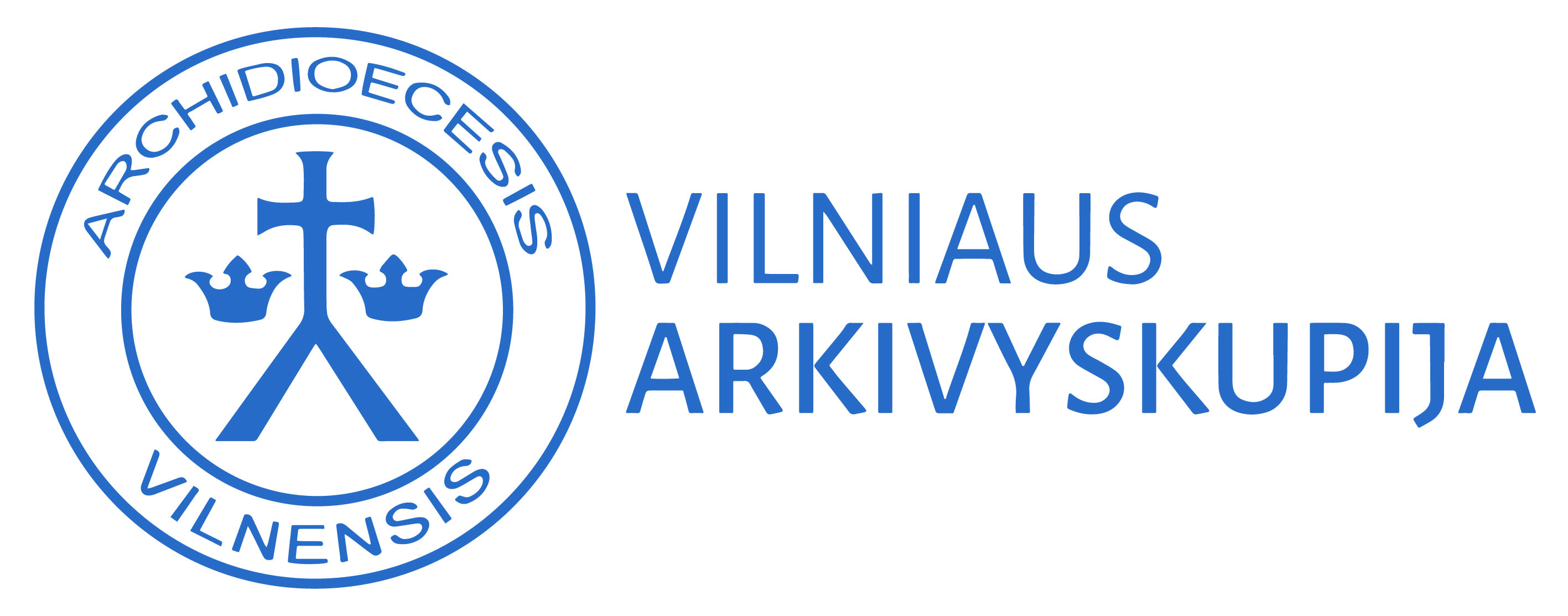History and Monuments
An invisible part of the building, the Crypts present the history of the temple situated on one of the earliest inhabited sites of Vilnius, the development of the building, and the figures of outstanding merit to the state and Church of Lithuania who are buried there. The exhibition set up in the crypts and corridors introduces the funerary traditions and archaeological finds, and leads to the Royal Mausoleum.
Fresco Crucifixion with the Virgin Mary and St. John the Evangelist
The composition Crucifixion with the Virgin Mary and St. John the Evangelist dating back to the first half of the 15th century as well as the fragments of figurative mural painting performed in al secco technique (i.e., painted on dry plaster) were discovered in the crypt in 1985. Christ is depicted in the centre with the Virgin Mary standing on his left side, and St. John the Evangelist on his right. The art historical analysis of the painting has revealed that the master who painted the crypt must have learned his craft in the milieu of Orthodox Slavs, but was commissioned to perform the job by a Catholic. As the result, the fresco combines Byzantine stylistics with Catholic iconography. The line drawing of the figures clearly belongs to the Byzantine style, whereas the school of the artist is revealed through the letters ω and и in the rays of the cruciform nimbus of Jesus. The remaining letters stand for the abbreviation of the Greek phrase “the one who is” (oωи), which clearly refers to God’s words to Moses “I am who I am” (Exodus 3:14) and indicates the incarnation of God in man.
The Royal Mausoleum
The most prominent figures of the Grand Duchy of Lithuania were buried in the cathedral crypts. Animated images of the rulers in the Royal Mausoleum under Saint Casimir’s Chapel evoke some of these figures – King of Poland and Grand Duke of Lithuania Alexander, Queens Barbora Radvilaitė and Elisabeth of Austria, King of Poland and Grand Duke of Lithuania Władysław IV Vasa (the mausoleum contains an urn with the king’s heart and inner organs) who are buried in the mausoleum, as well as Vytautas the Great (the location of his remains is one of the most curious mysteries of the cathedral crypts), and Prince Casimir – the holy patron of Lithuania whose relics are held in the chapel above the mausoleum.
The Crypt of the Cathedral Chapter
The Crypt of the Cathedral Chapter is the largest and most picturesque underground room of the cathedral. It is two-nave Gothic crypt divided by three thick pillars.
Sarcophagus for the remains of Vytautas the Great
Grand Duke of Lithuania Vytautas (c. 1348–1430) is the first Lithuanian ruler buried in the Vilnius Cathedral. It is possible that one of the founders of the Vilnius Cathedral Vytautas was entombed under the Altar of the Holy Cross. In 1930, in commemoration of the 500th anniversary since the death of Vytautas the Great, the decision was made to build a memorial tombstone in the Cathedral and to transfer the remains of the Duke to a new sarcophagus. However, the exact burial place of Vytautas the Great remains unknown.
Silver angel
In the largest and most picturesque room of the crypts, the Chapter Crypt, a 3D hologram created using contemporary technologies can be seen rising above one of the earliest and most valuable exhibits – a miniature 2 cm high silver angel from the late 14th century. It is an allusion to the reliquary that did not survive. This subtle little kneeling angel holding a shield with the coat of arms of the Vilnius Cathedral Chapter is thought to have served as a leg of the reliquary.






